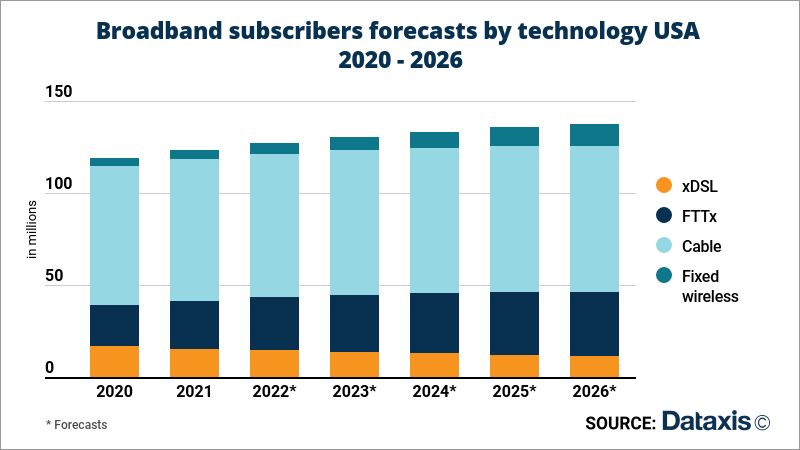Trends
US cable expected to face stronger fiber competition
Dataxis expects broadband penetration to keep increasing to reach almost 100% of U.S. households by 2026. In a market historically dominated by cable operators, optical fiber will play the most significant role in this growth, representing the vast majority of gained subscribers within the next five years. In 2026, FTTH should therefore account for 25% of the total broadband market.
FTTH expansion will not solely be the result of telcos’ investing into the FTTH deployment, but also of legacy cable operators extending and upgrading their fixed networks to full fiber premises. For instance, Altice USA plans to speed up its on-going deployment of fiber-optic lines, and aims at passing 6.5 million households by the end of 2025.

Fixed wireless offers will also play their part in pushing further broadband penetration, and should not be overlooked, as it differentiates strategies from the two most significant telcos in the market, Verizon and AT&T. While the latter has spun off its WarnerMedia video business to focus on 5G and FTTH deployments, the former is betting big on fixed wireless. As of March 2022, Verizon has already grown its fixed wireless subscriber base to 433K (including business subscribers), and plans add around 4 million more by 2025. FWA is all the more tipped for a swift increase since T-Mobile has joined Verizon in the battle, and intents to reach the 8-million customers milestone within the same time frame.
At the overall market level, market shares gained by FTTH and FWA should come mainly at the expense of DSL, while cable business will do better than resist, by maintaining its predominance with a 57% market share in 2026. BCS Bureau





You must be logged in to post a comment Login